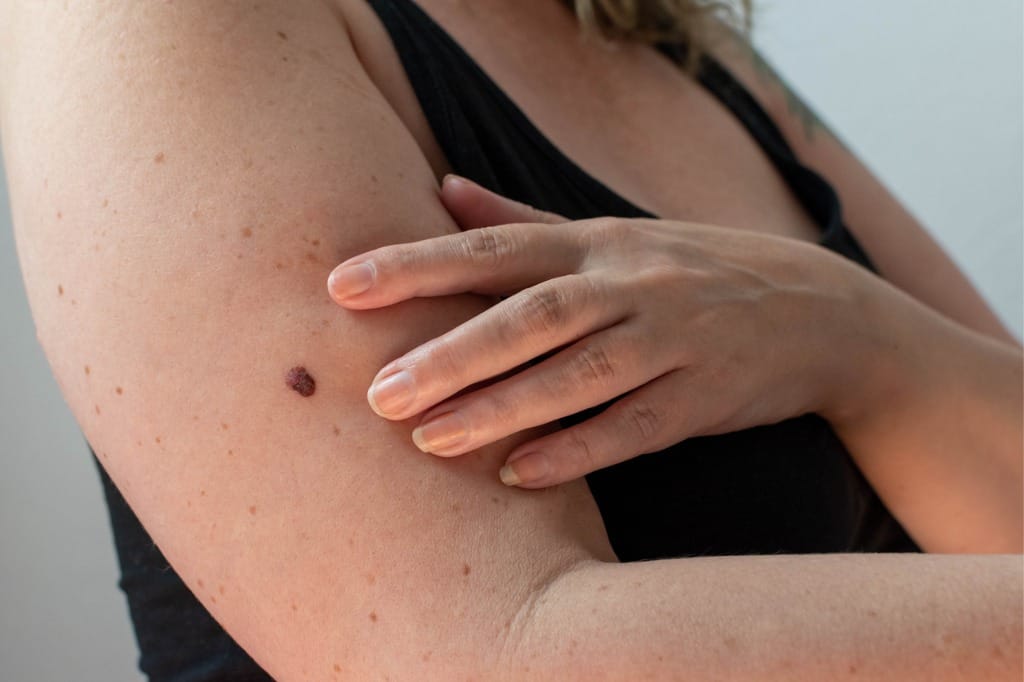A Guide to Skin Cancer Symptoms, Prevention, and Treatments

Skin cancer is a serious condition that may develop from exposure to UV radiation from the sun or tanning beds. According to the CDC, skin cancer is the most common form of cancer in the United States. Nearly 9,500 Americans are diagnosed with skin cancer daily. Therefore, recognizing the most common skin cancer symptoms and learning how to reduce your risk is paramount for optimal health.
Although skin cancer is one of the most preventable forms of cancer, many Americans don’t recognize the signs and symptoms until it’s too late. Early detection is key to successful treatment, so spreading awareness and educating yourself on the most common signs of skin cancer is crucial. To help you better understand skin cancer symptoms and reduce your risk, Cascade Eye & Skin Centers has built this comprehensive guide.
What Does Skin Cancer Look Like?
There are three main types of skin cancer, including basal cell carcinoma, squamous cell carcinoma, and malignant melanoma. Each type has slightly different symptoms and may affect any part of the body. It’s essential to familiarize yourself with what each one looks like so you can take action quickly. Common skin cancer symptoms include:
- New growths or bumps on the skin that are shiny, waxy, or pearly
- Moles that change in size, shape, color, or texture
- A sore or lesion that does not heal
- Red, scaly, or crusty patches of skin
- Rough, thickened, or wart-like skin
- Dark spots or patches that look like a bruise but do not go away
In addition to being aware of the skin cancer symptoms above, the ABCDEs of skin cancer can help you identify any potential issues. ABCDE stands for asymmetry, border irregularity, color variation, diameter greater than 6mm, and evolving. If you notice any of these skin cancer symptoms, contact your doctor immediately for an evaluation.
Tips to Reduce Your Risk of Skin Cancer
Reducing your risk of skin cancer is possible by taking some simple precautions. To help you take control of your skin health, Cascade Eye & Skin Centers recommends implementing the following tips into your daily routine.
Wear Protective Clothing
The best way to protect yourself from UV radiation is to wear clothing that covers your skin. When you are out in the sun, consider wearing wide-brimmed hats, long sleeves, and pants to protect your skin. Additionally, make sure to wear sunglasses that have UV protection. Clothing that is specially designed for UV protection can be beneficial, as well.
Seek Shade
When planning outdoor activities, try to pick times when the UV radiation is weaker. The sun’s UV radiation is the strongest between 10 am to 4 pm, so it’s best to stay in the shade during these hours. If you are outside, try to find a tree or use an umbrella to provide extra protection.
Use Sunscreen
One of the best ways to reduce your risk of skin cancer is by applying sunscreen regularly. Using a broad-spectrum sunscreen with an SPF of 30 or higher can help block UVA and UVB rays. Make sure to apply a generous amount of sunscreen 15 minutes before you go outside and reapply every two hours. You may need to reapply more often if you are swimming or sweating. Cascade offers many sun protection products to help you get the protection you need.
Avoid Tanning Beds
Tanning beds use UV radiation, which is a carcinogen known to cause skin cancer in humans. Even occasional use significantly increases your risk of skin cancer, especially melanoma. Instead, consider self-tanning products, spray tans, or bronzing lotions and powders to achieve a tan look without UV exposure. Remember, there is no such thing as a “safe” tanning bed, so avoid them and embrace your natural skin tone to keep your skin healthy and reduce your risk of skin cancer.
What to Expect During a Full-body Skin Exam
A full-body skin exam at Cascade Eye & Skin Centers checks your body for suspicious skin lesions. Your dermatologist inspects your body from head to toe, paying particular attention to areas that are commonly exposed to harmful UV radiation. If they find any suspicious spots, they may perform a biopsy to determine if the lesion is cancerous or benign.
It’s crucial to note that providers cannot address other concerns during this visit due to the detailed nature of a full-body skin exam. Therefore, it’s essential to record anything new or unusual on your skin before your appointment. To prepare for your full-body skin exam, remove any nail polish from your fingers and toes. You may also want to bring makeup remover or plan not to wear makeup at all, as it may hinder the dermatologist’s ability to see any suspicious-looking spots on your skin.
Treating Skin Cancer With Mohs Surgery
If you are diagnosed with skin cancer, Mohs surgery is an effective treatment option. Mohs surgery involves removing the cancerous tissue layer by layer until all of the cancer is gone. This procedure has a high success rate, and patients can typically go home the same day of the procedure. Mohs surgery offers a cure rate of about 99% for skin cancer that has not yet been treated. Click here to learn more about everything you should expect from Mohs surgery.
Reduce Your Risk of Skin Cancer at Cascade Eye & Skin Centers
At Cascade Eye & Skin Centers, we offer comprehensive skin cancer screenings and treatment options, including Mohs surgery. Our team of experienced dermatologists can help you reduce your risk of skin cancer by providing education and resources to help protect your skin from the harmful effects of the sun. If you’re concerned about skin cancer symptoms or want to learn more about reducing your risk of skin cancer, contact Cascade Eye & Skin Centers to schedule a skin cancer screening today.




